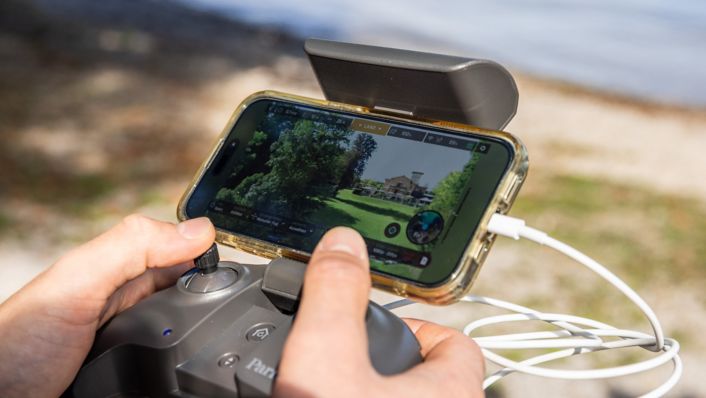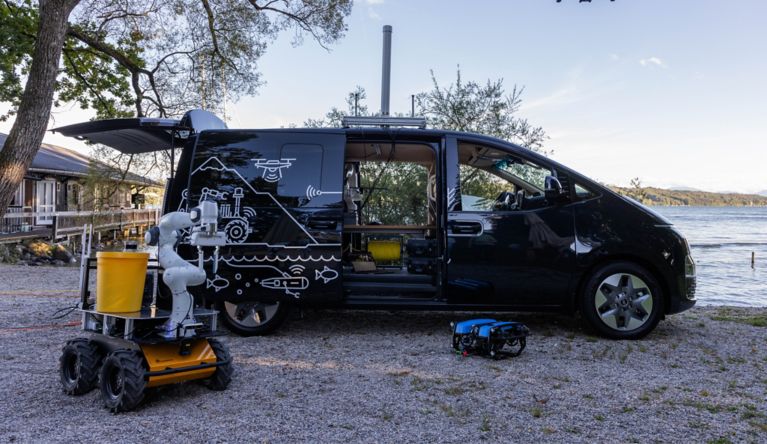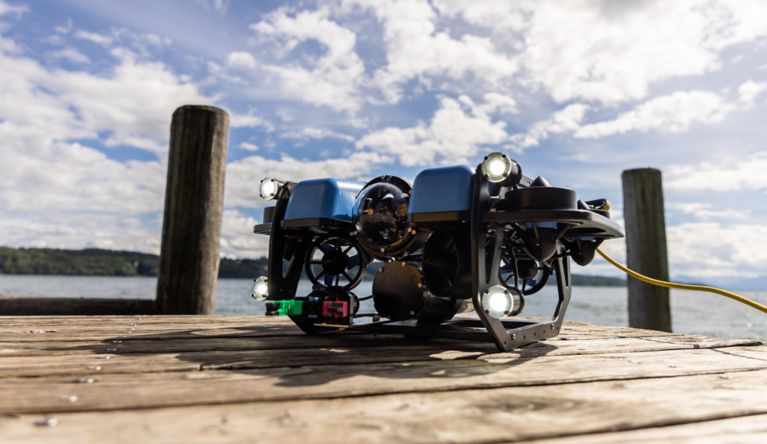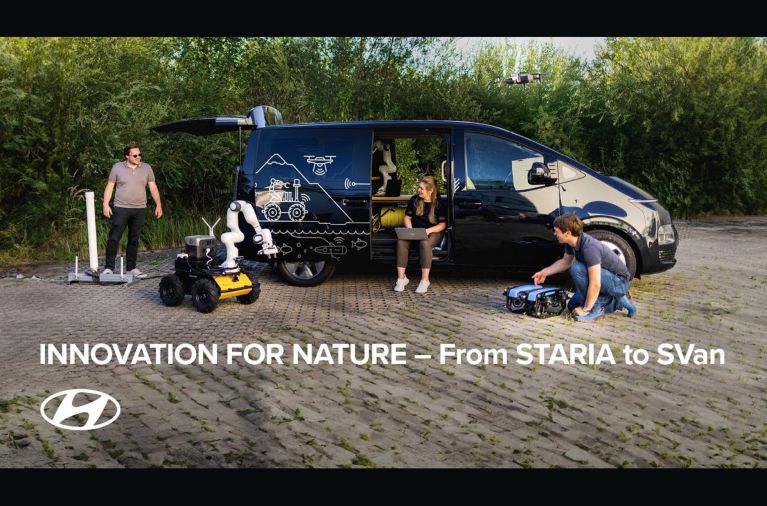In today's world, grappling with urgent ecological challenges, the significance of innovation is increasing steadily. There is ample opportunity for optimising resource usage and transforming our systems to improve the planet. As we transition towards a more sustainable world, technology is advancing rapidly, giving rise to new inventions poised to address the planet's most pressing environmental issues.
Preservation First
Safeguarding our vital resources – water, air, and soil – stands as an imperative calling for collective action on an unprecedented scale. Tackling the urgent challenges of our era requires extensive collaboration across diverse sectors, offering a key to unravel solutions to environmental crises. This teamwork helps us come up with new and better ways to deal with environmental issues. Working together also leads to more creative ideas, efficient use of resources, and reaching out to people around the world. Among the many new technologies, environmental robotics is a particularly exciting and promising way to help the environment in the future. In its early development, environmental robotics is shaping up to be one of humanity's most valuable tools, allowing us to explore uncharted territories and make substantial contributions to the preservation of our natural world.
Moreover, there is a compelling argument for the indispensable role of robotics, particularly in scenarios where human intervention poses significant risks. In situations where human involvement could be dangerous, robotics offer a means to surmount these challenges. Whether it's exploring hazardous environments or executing intricate tasks with precision, robotics can serve as our safeguard and a catalyst for progress, augmenting our abilities where human hands alone fall short.

SVan: A Journey of Environmental Empowerment
The cooperation between different sectors is key if we want to create innovative solutions for the many challenges our planet is currently going through, making sure we contribute to a better future for the generations to come. An exemplary instance of such collaborations for the benefit of the environment is the SVan, an initiative between Hyundai Motor Europe and the Technical University of Munich (TUM). SVan stands out as an innovative mobile robot hub designed for environmental protection. This transformative project repurposes Hyundai's versatile Staria vehicle into a central command post for various aerial, ground, and underwater robots.





Developed at TUM's Munich Institute of Robotics and Machine Intelligence (MIRMI), the SVan project breathes new life into the concept of sustainable mobility.
What distinguishes this venture is its inclusivity. Regardless of previous robotics expertise, individuals worldwide can remotely harness and utilise these robots. At the core of this endeavour is the establishment of a global satellite lab, open to environmental experts globally. In this collaborative space, experts can control the robots as they perform crucial tasks such as sampling, aerial observations, and underwater measurements. With SVan's adaptable robots at their disposal, the necessity for on-site human presence is eliminated, ensuring enhanced safety and efficiency in addressing environmental challenges in locations where human access is restricted.
The role of environmental robotics is an essential one. It's like a motor in a car. I think that robotics are kind of the hands and the feet that we don't have as humans on this vast scale. Think about the mega cities of today and how they are producing enormous amount of garbage. How do we want to collect it? How do we want to bring that into a circular economy? How do we want to get rid of all the enormous electronics waste we are producing? This is exactly where these kinds of environmental robotics can play an essential role.

Hyundai x TUM | Innovation for Nature: From STARIA to SVan | Episode 1
Follow this new docuseries on The SVan Project
Enabling Collaboration: Hyundai’s Vision for a Sustainable Future
The SVan stands as a testament to Hyundai's unwavering commitment to its 'Progress for Humanity' vision, as manifested through the company's Creating Shared Value (CSV) strategy. Hyundai plays a pivotal role in bringing stakeholders together and collaborating on future-driven projects, aligning with the ethos of Hyundai CRADLE. As a corporate venturing and open innovation business, CRADLE invests in advanced future technologies to pave the way for better mobility services, smart cities, and eco-friendly technologies.
Bringing together stakeholders such as CRADLE, Healthy Seas, and TUM exemplify Hyundai's role as a facilitator of cooperation, enriching the communities it serves. These partnerships address current challenges and anticipate future ones through innovative solutions, showcasing the company's leadership in developing sustainable and intelligent mobility solutions beyond traditional automotive manufacturing.
One notable collaboration is Hyundai's partnership with Healthy Seas, which underscores its dedication to sustainability and its role as a catalyst for positive change. Through this joint effort, Hyundai actively supports Healthy Seas' mission to recover discarded fishing nets from the oceans and transform them into high-quality products. By repurposing ocean waste into usable materials, Hyundai contributes not only to cleaner seas but also sets an example for responsible corporate citizenship.
Pascal Van Erp, Deputy Director of Healthy Seas, emphasizes the importance of innovations like underwater drones for a sustainable approach to marine conservation:
For us as divers, innovations like underwater drones and their practical utilization are crucial for a sustainable approach to marine conservation. Some parts of the ocean are challenging for humans to access, and longer recovery times are necessary. Drones can help us conduct clean-ups much more efficiently.
During a roundtable discussion on environmental robotics and future innovation held during the SVan launch event, Joseph Boadi-Darkwah of CRADLE Berlin highlighted the collaborative decision-making approach:
We involve different teams in making decisions, whether it's collaborations or investment cases, so that we are aligned in our responsibility. Before any investment is made, it's important to understand the ethos of that investment – it should be aimed towards the good of society. This is what Hyundai has been doing for over 50 years.
Democratisation of Robotics
By democratising access to advanced robotics for environmental conservation, Hyundai and TUM are not only reshaping environmental conservation but also actively paving the way for a more sustainable and ecologically conscious future. With a vision of giving everybody the opportunity to engage in environmental preservation, they are breaking down barriers and empowering communities to actively participate in safeguarding our planet.
This commitment to environmental sustainability is encapsulated in "Hyundai Continue," an initiative that symbolises Hyundai Motor Company’s relentless pursuit of a sustainable future, andcontinues to champion freedom in mobility and connection, forging a path towards a brighter, more sustainable world. Through these efforts, Hyundai promotes a sense of responsibility and unity in the global community, fostering a shared commitment to environmental stewardship.
Disclaimer: CO2 and emissions data
- Fuel consumption combined for the Hyundai STARIA van with 6MT 2WD in l/100 km: 8 - 7.8; CO2 emissions combined in g/km: 210 - 205 (WLTP)
- Fuel consumption combined for the Hyundai STARIA wagon/premium with 6MT 2WD in l/100 km: 8 - 7.8; CO2 emissions combined in g/km: 210 - 205 (WLTP)
- Fuel consumption combined for the Hyundai STARIA van with 8AT 2WD in l/100 km: 8.2 - 8; CO2 emissions combined in g/km: 215 - 209 (WLTP)
- Fuel consumption combined for the Hyundai STARIA wagon/premium with 8AT 2WD in l/100 km: 8.5 - 8.1; CO2 emissions combined in g/km: 222 - 212 (WLTP)
- Fuel consumption combined for the Hyundai STARIA wagon/premium with 8AT 4WD in l/100 km: 8.9 - 8.5; CO2 emissions combined in g/km: 234 - 222 (WLTP)















